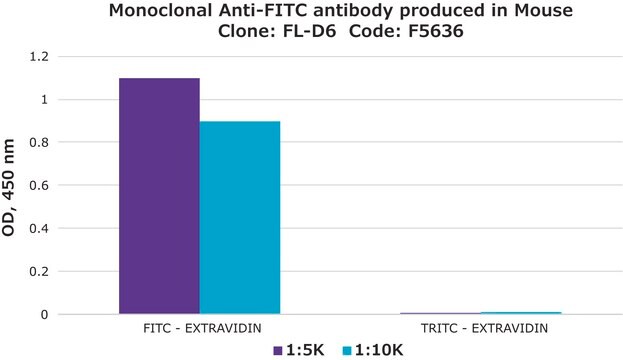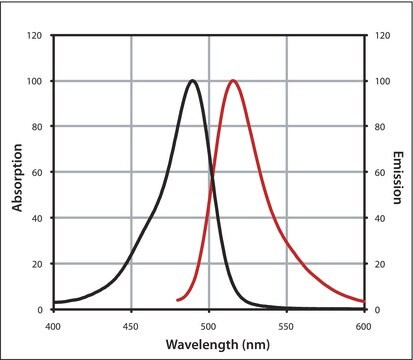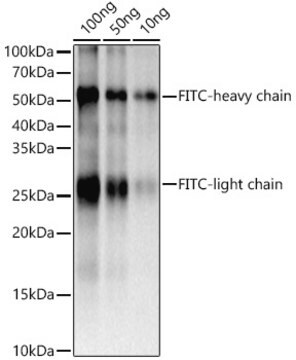SAB4200738
Anti-FITC antibody, Mouse monoclonal
clone FL-D6, purified from hybridoma cell culture
Sinónimos:
Anti-Fluorescein isothiocyanate
About This Item
Productos recomendados
biological source
mouse
Quality Level
antibody form
purified from hybridoma cell culture
antibody product type
primary antibodies
clone
FL-D6, monoclonal
form
buffered aqueous solution
concentration
~1.0 mg/mL
technique(s)
immunoblotting: 1.25-2.5 μg/mL using ExtrAvidin-FITC
immunohistochemistry: suitable
indirect ELISA: 0.15-0.3 μg/mL using 5 μg/ml ExtrAvidin-FITC
isotype
IgG1
shipped in
dry ice
storage temp.
−20°C
target post-translational modification
unmodified
General description
FITC (fluorescein isothiocyanate) is a fluorochrome dye that absorbs ultraviolet or blue light (with peak wavelength of approximately 495 nm) causing molecules to become excited and emit a visible yellow-green light (with peak wavelength of approximately 519 nm).
Specificity
Immunogen
Application
- immunoblotting
- enzyme-linked immunosorbent assay (ELISA)
- immunohistochemistry
Biochem/physiol Actions
Physical form
Storage and Stability
Disclaimer
¿No encuentra el producto adecuado?
Pruebe nuestro Herramienta de selección de productos.
Storage Class
10 - Combustible liquids
flash_point_f
Not applicable
flash_point_c
Not applicable
Certificados de análisis (COA)
Busque Certificados de análisis (COA) introduciendo el número de lote del producto. Los números de lote se encuentran en la etiqueta del producto después de las palabras «Lot» o «Batch»
¿Ya tiene este producto?
Encuentre la documentación para los productos que ha comprado recientemente en la Biblioteca de documentos.
Nuestro equipo de científicos tiene experiencia en todas las áreas de investigación: Ciencias de la vida, Ciencia de los materiales, Síntesis química, Cromatografía, Analítica y muchas otras.
Póngase en contacto con el Servicio técnico








